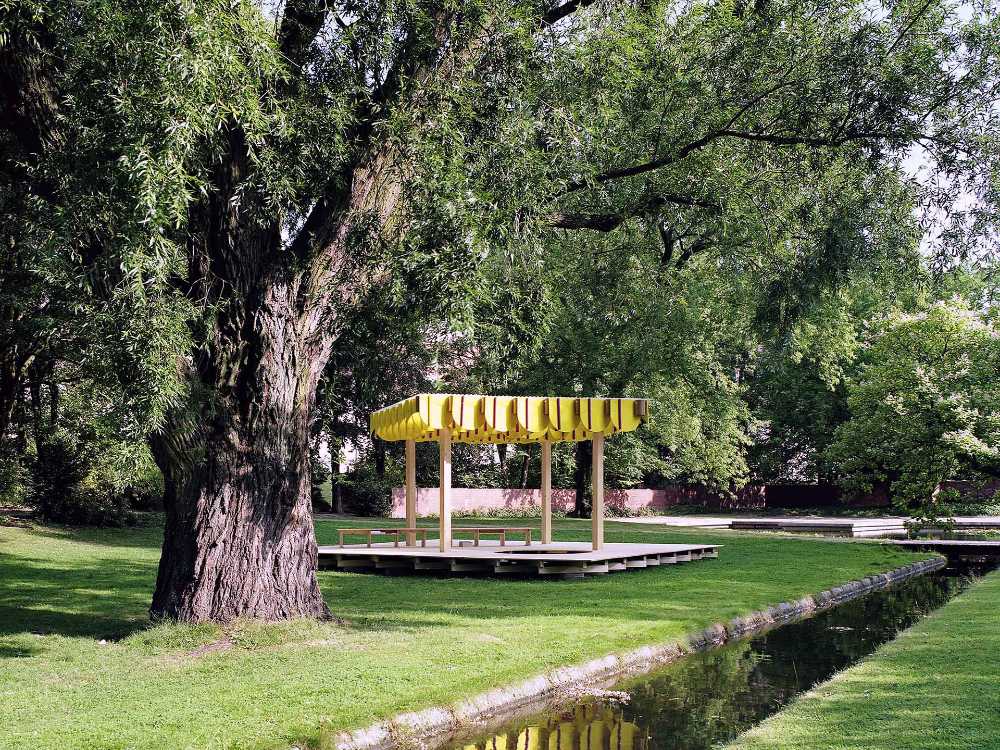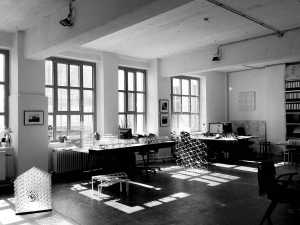The project is also carried out with the collaboration of the Japanese artist Nobuko Watabiki who designed the chromatic study. The pavilion functions as an interaction between art and architecture and creates a quiet refuge in the fluid space of the vast park. As a public platform it encourages visitors to enjoy and experience new perspectives of the park.


Art and architecture for a pavilion in Hamburg. Wooden panels arranged like a fan
Belvedere is a pavilion built in Hamburg's central park that celebrates the 30th anniversary of the partnership between the city and Osaka. Kawahara Krause Architects Studio envisions a self-supporting roof made of recycled wooden panels.
- #Europe
- #Germany
- #Exhibition / Temporary Installation
- #Wood
- #Architectures
- #Architecture

The pavilion was designed as a temporary structure, therefore the choice of construction materials and the option to demolish it from its components played an important role in the design. In fact, the structural system consists of many small elements easy to handle, as well as being easy to transport and assemble without the use of large machinery, this also enables a simple construction on site. In the pavilion only reversible joints, which can be interlocked or screwed have been used to guarantee the recycling of wood and paper materials after disassembling.

The roof structure is made of cardboard. On a single curved line, the rectangular sheets were cut into two parts: a convex and a concave part. Assembling the convex and concave parts in different directions, in addition to the different colours chosen by Nobuko Watabiki, the very rational roof structure now appears layered and faceted. Depending on one's point of view, the concave and convex elements seem to align neatly or intertwine arbitrarily












